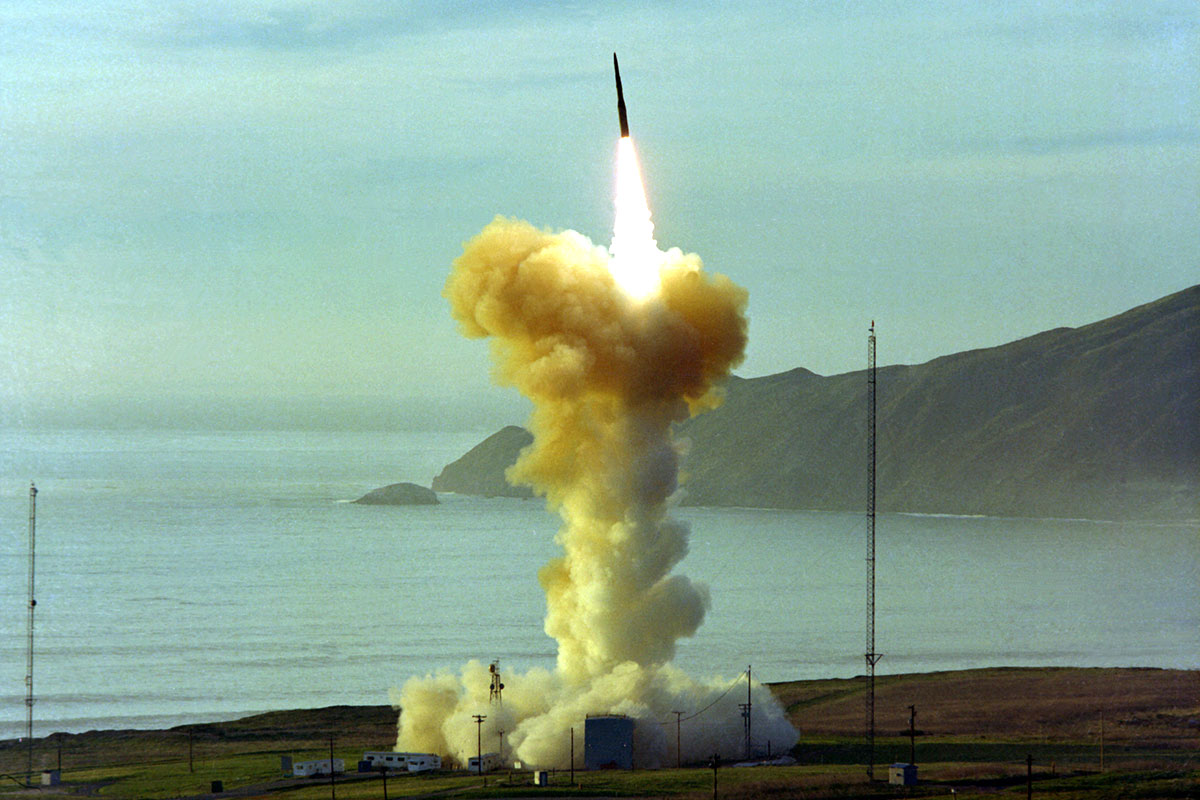LGM-30 Minuteman III ICBM

The LGM-30 Minuteman intercontinental ballistic missile is an element of the nation's strategic deterrent forces. The "L" in LGM is the Department of Defense designation for silo-launched; "G" means surface attack; and "M" stands for guided missile.
The Minuteman is a strategic weapon system using a ballistic missile of intercontinental range. Missiles are dispersed in hardened silos to protect against attack and connected to an underground launch control center through a system of hardened cables. Launch crews, consisting of two officers, perform around-the-clock alert in the launch control center. A variety of communication systems provide the National Command Authorities with highly reliable, virtually instantaneous direct contact with each launch crew. Should command capability be lost between the launch control center and remote missile launch facilities, specially-configured EC-135 airborne launch control center aircraft automatically assume command and control of the isolated missile or missiles. Fully qualified airborne missile combat crews aboard airborne launch control center aircraft would execute the NCA orders.
The Minuteman weapon system was conceived in the late 1950s and deployed in the early 1960s. Minuteman was a revolutionary concept and an extraordinary technical achievement. Both the missile and basing components incorporated significant advances beyond the relatively slow-reacting, liquid-fueled, remotely-controlled intercontinental ballistic missiles of the previous generation. From the beginning, Minuteman missiles have provided a quick-reacting, inertially guided, highly survivable component to America's nuclear Triad. As a result of U.S. initiatives to cancel development programs for new intercontinental ballistic missiles and retire the Peacekeeper ICBM, Minuteman will become the only land-based ICBM in the Triad.
General Characteristics
| Primary Function: | Intercontinental ballistic missile |
|---|---|
| Power Plant: | Three solid-propellant rocket motors; first stage, Thiokol; second stage, Aerojet-General; third stage, United Technologies Chemical Systems Division |
| Thrust: | First stage, 202,600 pounds (91,170 kilograms) |
| Length: | 59.9 feet (18 meters) |
| Weight: | 79,432 pounds (32,158 kilograms) |
| Diameter: | 5.5 feet (1.67 meters) |
| Speed: | Approximately 15,000 mph (Mach 23 or 24,000 kph) at burnout |
| Range: | 6,000-plus miles (5,218 nautical miles) |
| Ceiling: | 700 miles (1,120 kilometers) |
| Payload: | Re-entry vehicle: General Electric MK 12 or MK 12A |
| Guidance systems: | Inertial system: Automatics Division of Rockwell International; ground electronic/security system: Sylvania Electronics Systems and Boeing Co. |
| Warheads: | Three (downloaded to one as required by the Washington Summit Agreement, June 1992) |
| Unit Cost: | Approximately $7 million |
| Date Deployed: | June 1970, production cessation: December 1978 |
| Inventory: | Active force, 530; Reserve, 0; ANG, 0 |